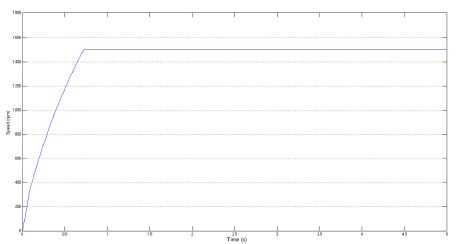ABSTRACT
Current control based on hysteresis algorithms are widely
used in different applications, such as motion control, active filtering or
active/reactive power delivery control in distributed generation systems. The
hysteresis current control provides to the system a fast and robust dynamic
response, and requires a simple implementation in standard digital signal platforms.
On the other hand, the main drawback of classical hysteresis current control
lies in the fact that the switching frequency is variable, as the hysteresis band is
fixed. In this paper a variable band hysteresis control algorithm will be
presented. As it will be shown, this variable band permits overcoming the aforementioned
problem giving rise to an almost constant switching frequency. The performance
of this algorithm, together with classical hysteresis controls and proportional
resonant (PR) controllers, has been evaluated in three different single-phase
PV inverter topologies, by means of simulations performed with PSIM. In
addition, the behavior of the thermal losses when using each control structure
in such converters has been studied as well.
SOFTWARE: MATLAB/SIMULINK
BLOCK DIAGRAM:
Fig. 1. Basic Current Control
Scheme in a single phase inverter.
EXPECTED
SIMULATION RESULTS:
Fig.
2. Behavior of the current and the voltage at the output of the converter
when
using the H5 topology.
Fig.
3. Behavior of the current and the voltage at the output of the converter
when
using the HERIC topology.
Fig.
4. Behavior of the current and the voltage at the output of the converter
when
using the or HB-ZVR topology.
CONCLUSION
A
hysteresis current control algorithm based on an adaptive hysteresis band for
single phase PV converter topologies has been presented in this paper. As it
has been shown analytically and by means of simulations this algorithm permits
obtaining a fixed switching frequency in all the tested topologies. The main
drawback of the conventional fixed hysteresis band current control is that
generates excessive current ripple because modulation frequency varies within a
band. This modulation
frequency variation makes complicated the output filter design. Adaptive
hysteresis band current control keeps the good performance of the fixed band
hysteresis current control and additionally permits an easier output filter
design due that the switching frequency is almost constant. On the other hand,
switching losses can be reduced by using this adaptive hysteresis band current control.
The analyzed topologies are the more widely used in transformerless
single-phase PV systems (H5 and HERIC). Based in the previously comparative
simulations results it can be concluded that in the case of H5 topology losses
are concentrated in S5. In case of HERIC topology losses are located among S1,
S2, S3 and S4. Finally in HB-ZVR single phase topology, losses are located in
S5. These results mean that in each case, the losses distribution is not the
same and a different thermal design should be done.
REFERENCES
[1] L.
Malesani, P. Mattavelli, P. Tomasin, “High Performance Hysteresis Modulation
Technique for Active Filters”, IEEE Transactions on Power Electronics,
Volume 12, September 1997.
[2] J.
Holtz and S. Stadtfeld, “A Predictive Controller for the Stator Current Vector
of AC Machine-fed from a Switched Voltage Source”, in Proc. Int. Power
Electronics Conference Rec. (Tokyo), 1983, pp. 1665-1675.
[3] M.
Ciobotaru, R. Teodorescu, and F. Blaabjerg, “Control of Single-Stage Single-Phase
PV Inverter”, European Conference on Power Electonics and
Applications, 2005.
[4] Y.
Hayashi, N. Sato, K. Takahashi, “A Novel Control of a Current- Source Active
Filter for ac Power System Harmonic Compensation”, IEEE Transactions on
Industrial Applications, Vol. 27, No. 2, March/April 1991.
[5] T.
Kato, K. Miyao, “Modified Hysteresis Control with Minor Loops for Single-Phase
Full-Bridge Inverters”, Doshisha University, Kyoto Japan, 88CH2565-0/88/0000-0689$01.00,
1988 IEEE.








































